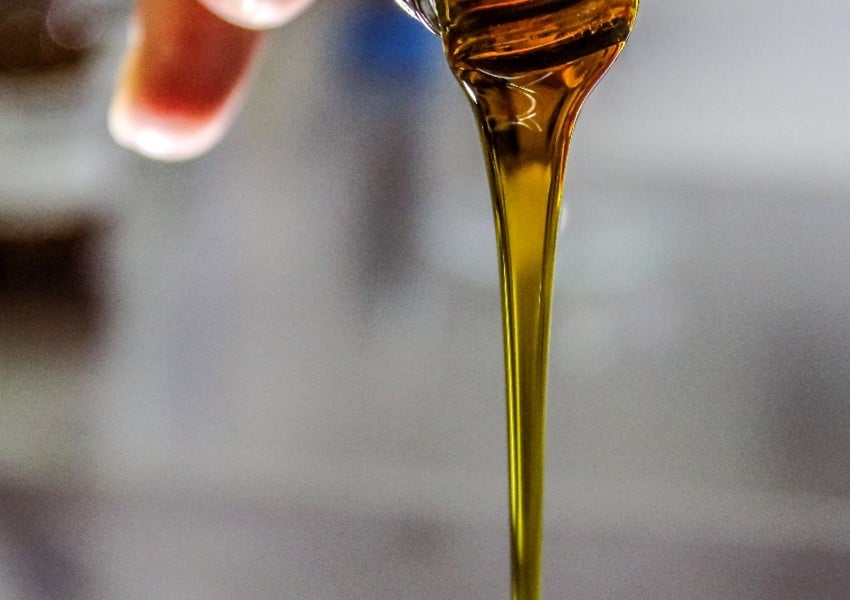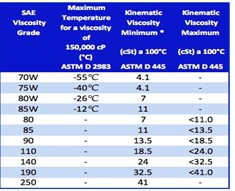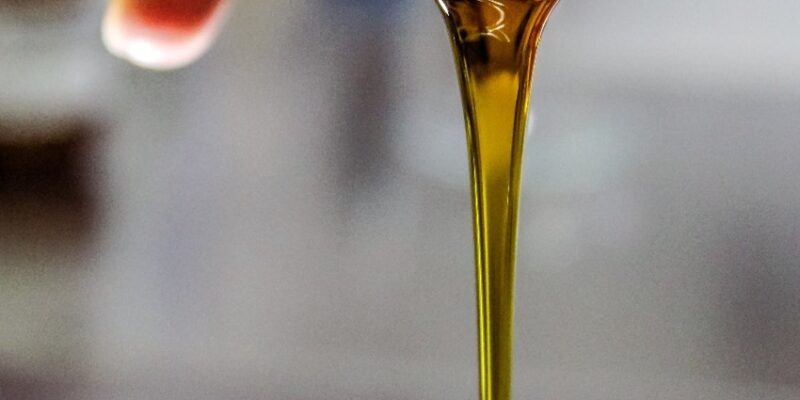
The SAE J306 standard specifies viscosity limits for the classification of automotive gear lubricants. SAE J306 viscosity grades should not be confused with the SAE J300 viscosity grading system for engine oils (please refer to OilChat #3).
SAE J306 is intended for use by equipment manufacturers when defining and recommending automotive gear, axle and manual transmission lubricants and for oil marketers when labelling such lubricants with respect to their viscosity. It is also used in Owners’ Manuals to advise operators which viscosity grade to use.
The SAE J306 classification is based on the lubricant viscosity at both high and low temperatures. The high temperature kinematic viscosity values are reported in centistokes (cSt). The low temperature viscosities are determined at sub-zero temperatures and are reported in centipoise (cP). High temperature viscosity is related to the hydrodynamic lubrication characteristics of the oil and test results must meet the 100°C viscosity limits listed in the table below.
Low temperature viscosity requirements are associated with the ability of the fluid to flow and to provide adequate lubrication to critical parts under low ambient temperature conditions. The 150 000 cP viscosity value used to define low-temperature properties is based on a series of tests in a specific rear axle design. These tests have shown that pinion bearing failure has occurred at viscosities higher than 150 000 cP in the test axle. The Brookfield test method is used since it provides adequate precision at this viscosity level.
For many years the SAE J306 standard comprised four low temperature grades (SAE 70W, 75W, 80W & 85W) and three high temperature grades (SAE 90, 140 & 250). During 1998 the standard was revised to incorporate two additional viscosity grade designations, SAE 80 and SAE 85. These new grades were included to specify the viscometrics for manual transmission lubricants. Another two viscosity grades were added to the viscosity classification as part of the January 2005 update.
These new grades are SAE 110 (100 °C viscosity between 18.5 and 24.0 cSt) and SAE 190 (100 °C viscosity between 32.5 and 41.0 cSt). The need for these two grades were necessitated by the wide variation in kinematic viscosity possible within prior versions of J306 for the SAE 90 grade (100 °C viscosity between 13.5 and 24.0 cSt) and the SAE 140 grade (100 °C viscosity between 24.0 and 41.0 cSt). The effect of such wide ranges of kinematic viscosities could result in an axle being serviced with a lubricant that had a viscosity significantly lower or higher than the lubricant that the axle had been designed for, even if the same viscosity grade had been used. Prior to 2005 OEMs may also have been forced to specify a higher viscosity grade than what they actually required, because the wide range of kinematic viscosities of the next lower grade could result in customers using a lubricant with a too low kinematic viscosity.
The current J306 Viscosity Classification for Automotive Gear Oils is:

To classify the viscosity grade of automotive gear oils, a lubricant may use one W grade numerical designation, one non-W grade numerical designation, or one W grade in combination with one non-W grade. In all cases the numerical designation must be preceded by the letters “SAE”. In addition, when both a W grade and a non-W grade are listed, the W grade is always recorded first (i.e. SAE 80W-90).
A lubricant which meets the requirements of both a low-temperature and a high-temperature grade is commonly known as a multiviscosity-grade oil. For example, an SAE 80W-90 lubricant must meet the low-temperature requirements for SAE 80W and the high-temperature requirements for SAE 90. Since the W grade is defined on the basis of maximum temperature for a Brookfield viscosity of 150 000 cP and minimum kinematic viscosity at 100 °C, it is possible for a lubricant to satisfy the requirements of more than one W grade. In labelling a W grade or a multiviscosity grade lubricant, only the lowest W grade conformed to may be mentioned on the label. Thus a lubricant meeting the requirements of both SAE 75W and SAE 85W as well as SAE 90 would be labelled as SAE 75W-90, and not SAE 75W-85W-90.
Similar to the SAE J300 grading system for engine oils, the SAE J306 standard only specifies viscosity limits for automotive gear lubricants. Other lubricant characteristics such as performance level and service classification are not considered. These will be discussed in future issues of OilChat.

